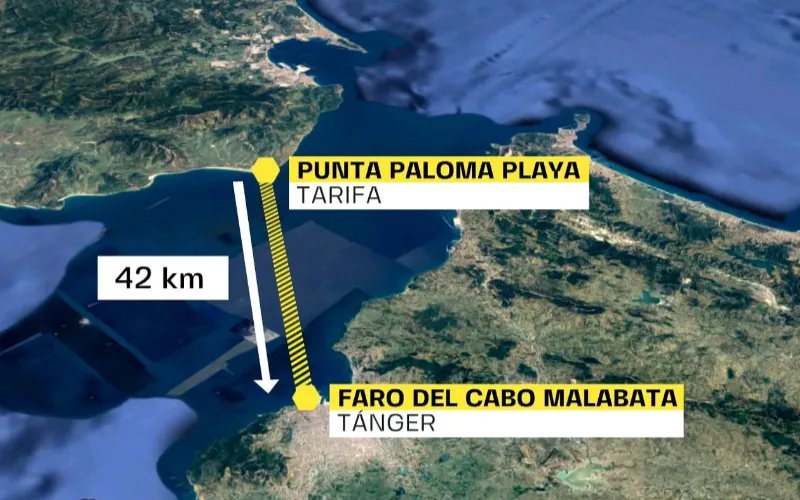Ambitious Gibraltar Tunnel Project Faces Seismic Challenges and 2040 Horizon

Relaunched in February 2023, the ambitious project of a submarine railway tunnel connecting Morocco and Spain across the Strait of Gibraltar continues to progress, but only in its study phase. While recent contracts with international companies show progress, numerous technical, financial and political challenges make its concrete realization uncertain for many years to come.
The current plan is to build a railway link about 42 kilometers long. The structure should reach depths of up to 475 meters below sea level, in an area of high seismic activity near the Azores-Gibraltar fault, which represents a major technical challenge.
Currently, the project is at the feasibility analysis stage, which should be completed this month. To carry out this phase, contracts have been signed. The company EniCo is in charge of the financial feasibility studies, while the British company Vodafone was awarded a two-year contract in mid-August to provide telecommunications services to the team of fifteen people overseeing the project. This contract includes the provision of a one gigabit per second (Gbps) connection and a 24/7 monitoring system.
Despite a renewed interest, the schedule remains very cautious. The hypothesis of an inauguration for the 2030 World Cup is considered "unrealistic" by many experts, as the main construction has not yet begun. In the most optimistic scenario, work would not start before 2040. The estimated cost of the infrastructure ranges between 5 and 9 billion euros.
The financing of such a project is a major obstacle and will depend on international cooperation as well as significant investments from both states. On the Spanish side, the "political paralysis" situation and the absence of a planned budget for 2026 are presented as potential obstacles to the mobilization of the necessary funds.
In the long term, the tunnel promises to transform Euro-African trade and integration by facilitating the transport of passengers and goods without relying on ferries. However, its ultimate success remains conditional on the results of the ongoing studies and the ability to secure international financing, leaving a distant horizon of realization for the time being.
Related Articles
-

Culinary Controversy Erupts: Moroccan "Tanjia" Dish Claimed as Algerian, Sparking Online Outrage
7 September 2025
-

Hirak Leader Zefzafi Attends Father’s Funeral Amid Calls for Royal Pardon
7 September 2025
-

Tax Crackdown Rocks Morocco’s Real Estate: Developers Face Audits Over Cash Schemes
7 September 2025
-

Morocco’s $38 Billion Infrastructure Overhaul: Paving the Way for Regional Dominance
7 September 2025
-

Morocco Cracks Down on Illegal Construction: Major Cities Face Scrutiny Amid Urban Planning Scandal
6 September 2025